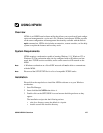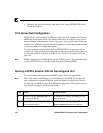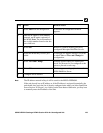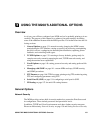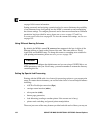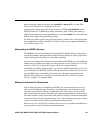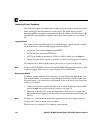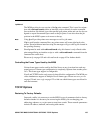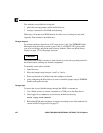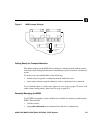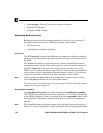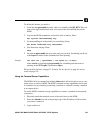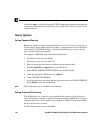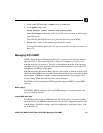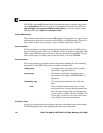
USING THE M208’S ADDITIONAL OPTIONS: TCP/IP Options 135
Lp Method
The M208 provides its own version of the lp print command. This is used in conjunc-
tion with rsh/rcmd/remsh within an interface script or directly from the command
line on the host. By default, it provides parallel port printer status and can also be con-
figured to report incremental byte counts as the job prints. It can also show the job
position in the M208’s queue as it moves to the top.
Using lp will provide printer error messages as well as job status.
If lp is used from the command line, any printer status will come right back to the
screen. If used within an interface script, the messages will go to the log file located in
the spooling directory.
Since lp must be used with rsh/rcmd/remsh only, this feature is only offered with a
print setup utilizing an interface script or with a rsh/rcmd/remsh command from the
command line on the host.
Please see lp on page 102 and rsh/rcmd/remsh on page 43 for further details.
Controlling the Frame Types Used by the M208
Various frame types can be used by the Print Server at any given time but each sup-
ported protocol’s frame type configuration is completely separate from another proto-
col’s. This frame type support is configurable.
Novell and TCP/IP are the only protocols that offer this configuration. The M208 pro-
vides simultaneous support of multiple Novell frame types. Please see store pserver
on page 120 and store tcpip on page 122 to find out which frame types are offered in
each environment.
TCP/IP Options
Restoring To Factory Defaults
Once and a while, it is necessary to set the M208’s network parameters back to factory
defaults whether it is because you are moving the M208, you are changing your
addressing schemes, or you just want to start from scratch. These network parameters
include: IP address, netmask, and routing table entries.
N
o
t
e
N
o
t
e



